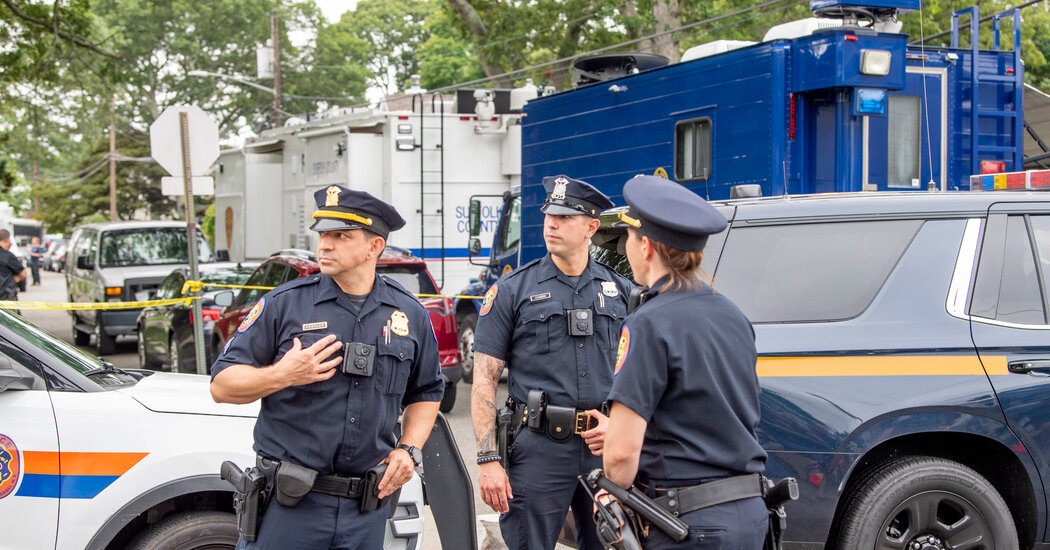Rex Heuermann, the meticulous architectural consultant who the authorities say murdered three women and buried them on a Long Island beach more than a decade ago, may have been among the last of the dying breed of American serial killers.
Even as serial killers came to inhabit a central place in the nation’s imagination — inspiring hit movies, television shows, books, podcasts and more — their actual number was dwindling dramatically. There were once hundreds at large, and a spike in the 1970s and ’80s terrified the country. Now only a handful at most are known to be active, researchers say.
The techniques that led to the arrest of Mr. Heuermann, who has pleaded not guilty to the crimes, help explain the waning of serial killing, which the F.B.I. defines as the same person killing two or more victims in separate events at different times.
It is harder to hide. Rapid advances in investigative technology, video and other digital surveillance tools, as well as the ability to analyze mountains of information, quickly allow the authorities to find killers who before would have gone undetected.
At the same time, Americans have adopted more cautious habits in their everyday lives — hitchhiking, for example, is less common, and children are driven to and from school. That reduces easy targets. And, some theorize, those bent on killing now opt for spectacular mass murders.
“The ‘perfect crime’ concept is more of a concept than it ever has been before,” said Adam Scott Wandt, an assistant professor at John Jay College of Criminal Justice.
More than a decade ago, prosecutors said, Mr. Heuermann tried to cover his digital tracks by communicating with victims using so-called burner phones, prepaid units purchased anonymously for temporary use.
But thanks to exponential progress in technology since 2010, investigators were able not only to chart Mr. Heuermann’s decade-old movements; they could also monitor exactly what he was searching online in recent months. They saw that he was using an anonymous account for internet queries like “Why could law enforcement not trace the calls made by the long island serial killer," prosecutors said. He had also been visiting massage parlors and contacting women working as escorts, they said.
The ubiquity of technology has made it harder to get away with murder, Mr. Wandt said. The amount of data people create in their daily lives is more than many can conceptualize, he said. Just by walking outside, people are now tracked by ever-present cameras, from Amazon’s Ring units outside homes to surveillance at banks and retail stores, he said. Every use of a phone or computer creates streams of data that are collected directly on devices or immortalized on servers, he said. A concerted effort by the federal government to ensure that even the smallest police departments can use technology to their benefit has also helped give investigators an upper hand, Mr. Wandt said.
In 1987, there were 198 known active serial killers — people connected to at least two murders — and 404 known victims across the United States, according to a report published three years ago by researchers who run Radford University and Florida Gulf Coast University’s Serial Killer Database.
By 2018, there were only 12 known serial killers and 44 victims, according to the report.
“The big question is: Are they going underground and finding other techniques?” said Terence Leary, an associate professor in the psychology department at Florida Gulf Coast University and the team leader for the database.
He said that some serial murderers have killed for discrete periods before taking prolonged breaks: “Maybe they decided to give it up. Who knows?” As the American way of killing has changed, experts are continuing to refine who should be classified as a serial killer and who a “spree killer” or a mass shooter. They make distinctions among grim data points like the number of victims and the lag between murders.
Spree killings and mass murders occur when someone kills several people in a brief period or single episode, while serial killings can span years. Serial killers’ motives are often deeply seated in the psyche: sex, anger and a desire for control.
While mass shootings have increased, many committed by teenagers, serial killings have apparently diminished. But both are committed by “criminal psychopaths,” Mr. Leary said. Some people who might once have become serial killers might instead be choosing a single fatal gesture, he said.
Both categories of people display antisocial personality disorder, he said, meaning that they manipulate and violate people without guilt. “It’s very possible that a shift is taking place,” Mr. Leary said.
The two practices also reflect their respective eras. Mass killers today have taken to livestreaming massacres and leaving behind manifestoes. Serial killers, who flourished in an age before social media, operated clandestinely in many cases. The serial killer who buried his victims near Gilgo Beach was careful to try to hide his crimes. He bound his victims with tape or belts and wrapped them in shrouds of camouflage-patterned burlap.



I would say more so that the age of the “rockstar” serial killer is basically done, and that now their just background static.
Like the portland serial killer ( https://kobi5.com/news/deaths-of-4-women-around-portland-now-believed-to-be-connected-212201/ ) - he’s gonna be forgotten in a few months.
Exactly, it’s the same thing as how it felt like trains kept derailing after the Norfolk Southern incident. In truth it’s always been happening, even though it’s rare. It’s just that news conglomerates decided it was a problem for a bit.
There’s lots of things like that out there if you look for them. The media’s always deciding what we should and should not care about.